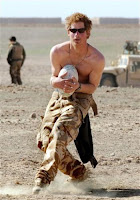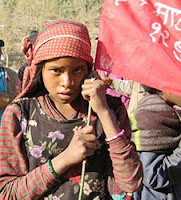Watching the news on television you would be forgiven for thinking life is full of riot and rumbustiousness!!
Indeed, we often complain that the world is getting noisier, people are getting more aggressive and kids are just plain out of control.
We watch almost riots at the football; angry confrontations between neighbours and vicious disagreements between politicians; In fact politicians appear to communicate solely in provocative sound bites – what on earth is going on? Is the world going mad … or is it the medium of the message?
I have met a number of people who work in the television industry; indeed one or two have attended our workshops. However, I have just had the pleasure of being introduced to a young woman who recently began working at one of our local TV stations – and she is astonished!
She – poor child – actually believed that the TV clips used to highlight the news were accurate renditions of the real events. She was not aware that they were carefully chosen and deliberately edited to produce the required result. And depending on the core values of the station they will be deliberately skewed to create the preferred opinion as well!
As I explained to her, it is perfectly understandable if you are aware of the requirement of the medium. Television is a medium of action – you only have to think just how mind numbing it would be to watch the news readers without the interruption of video clips, to understand that.
It is all about the action of the occasion, even if that action is not indicative of the truth of the situation. For instance; we often get clips now of the military in action overseas. Now we, in the know, are well aware of the fact that the members of the infantry do not patrol continuously – are not always on stand by, alert for any action. In fact we are far more familiar with the boredom of the operational area.
Any soldier will tell you of the routine of ‘great coats on – great coats off’ and if I were to say ‘Hurry up and wait’ I can see the nods of agreement throughout the nation from here. Operational activity is usually more about non-operational activity than a gung-ho “up to our necks in blood and bullets” kind of life.
This may make for much safer activity when we do get down to it (Prior Preparation and Planning Prevents …… and all that) – But it doesn’t make for good television. Can you just image what the general opinion would be back in the lounge rooms of the uninitiated?
“What on earth are they doing out there- I thought they were supposed to be getting the insurgents on the run!” or that great military mind that stands up and shouts in public “For all the good we are doing – we should bring the lads home NOW!!”
Because the medium does not support inaction we are served up unrealistic portions of cut and edited highlights which distorts the reality.
For instance – This is much more effective television
If we are encouraged to approve of the event we might get something like this
If we are not – then we could get this
But we still have the innocence to actually believe it because we see it on the television – “Listen you – I saw it on TV last night, I know what brutality is going on in the Middle East.”
Well I am not so sure if we should believe everything we see – you see I have been an uninvolved observer of a small demonstration outside one of our public buildings. I am not sure what the protest was about as I couldn’t read the placards – but there were about twenty people, very passionate about their cause. I stood and watched as they chanted and yelled directly into the lens of the TV camera. The spokesperson was interviewed and about five or six peopled crammed in behind waving placards and shouting slogans. Then they all dispersed. It was all over in less than twenty minutes.
So I was surprised then when I saw the report of the demonstration on the local news. It looked like the demonstration was hundreds strong; the tight, low angle creating the impression of size. Plus angling the camera to include the reporter with the uninvolved in the background also helped create the impression of great mobs of people being part of it.
The bulk of us passive lot were actually skimmed over as being irrelevant, and our bemused faces were kept out of camera shot. By picking the gaps between people it was made to appear that we were sparse and few.
Instead, the news bite was filled with angry faces yelling directly at … well at the TV camera! The interview with the spokesperson was interrupted by seemingly a large snarling throng intent on making their point of view very loud and clear. Again, tight shots and close-ups gave the impression of a much larger contingent.
It looked dangerous and quite frightening – but it bore no similarity to the actual demonstration that I watched earlier in the day.
TV by it’s very medium needs action, it need provocative declaration to lead to acrimonious accusations – if they can get the proponents to cry, sob or take a swing at each other so much the better.
And now that you are aware of that you can listen with amazement at the type of questions being asked by the interviewer. You might think “You asked that just a minute ago” – well maybe they did, but they didn’t get the right response you see.
Knowing this, anyone who is interviewed on television should not be surprised to find their relatively kind, welcoming and supportive interviewer turns into a provocative and aggressive doubter as soon as the camera rolls. As I know from experience
The television medium demands drama and if you haven’t got any inside you it is the role of the interviewer to try and tease it out. Action, drama and provocation is the medium of sight and if that is not what you are all about – then maybe you would be better off on the radio.
Understanding the requirements of the medium may help you choose the one that is right for your message.
Michele @ Trischel




